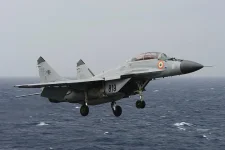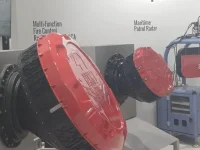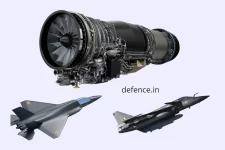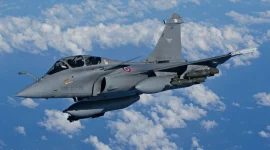- Views: 4K
- Replies: 31
A new, indigenously developed radar system is vying to become a key component of the Indian Air Force's (IAF) Sukhoi-30MKI fighter jet upgrade program.
DATA Patterns, a prominent Indian defence electronics firm, showcased its "Hawk I 2700" X-band Active Electronically Scanned Array (AESA) radar at the recent Aero India 2025 exhibition.
Company representatives stated that the Hawk I 2700 is not a modified version of the existing "Virupaksha" AESA radar, but rather a direct competitor offering unique and advanced features.
The Hawk I 2700 radar boasts a significant number of Transmit/Receive Modules (TRMs), totaling 2700. This surpasses the Virupaksha radar, which is reported to have 2400 TRMs.
A higher number of TRMs generally correlates with improved radar performance, including greater range and resolution. The Hawk I 2700 is reportedly capable of detecting targets with a Radar Cross-Section (RCS) of 5 square meters at a distance of up to 350 kilometers.
For smaller targets, with an RCS of 2 square meters, the detection range is stated to be 250 kilometers. Even targets with a small RCS of 1 square meter can be detected at a range of 200 kilometers.
A key feature of the Hawk I 2700 is its use of Gallium Nitride (GaN) technology in its TRMs. GaN components offer superior power efficiency and reliability compared to older technologies like Gallium Arsenide (GaAs). This translates to a more powerful and robust radar system.
Additionally, the Hawk I 2700 includes a "Swash Controller Unit," which allows the radar antenna to tilt mechanically on both sides. This feature enhances the radar's scanning capabilities, providing a wider field of view and improved tracking flexibility.
The introduction of the Hawk I 2700 creates a competitive landscape for the Su-30MKI upgrade. The Indian Air Force is expected to carefully evaluate both the Hawk I 2700 and the Virupaksha to determine the best solution for enhancing the combat capabilities of its Su-30MKI fleet.
Beyond the IAF, DATA Patterns is also reportedly considering marketing the Hawk I 2700 to international operators of Su-30 variants, many of whom currently rely on older Russian-made PESA (Passive Electronically Scanned Array) radar systems, like the N011M Bars.
The newer AESA technology offers significant advantages over PESA radars, including improved target tracking, electronic counter-countermeasures, and multi-tasking capabilities.




